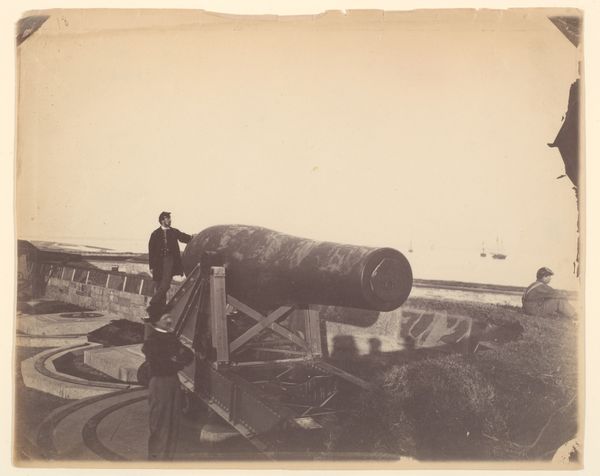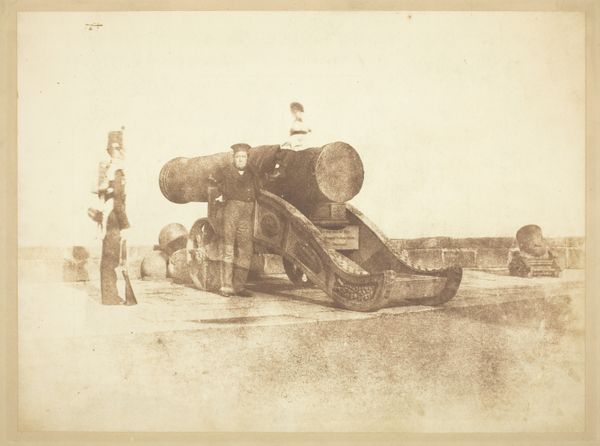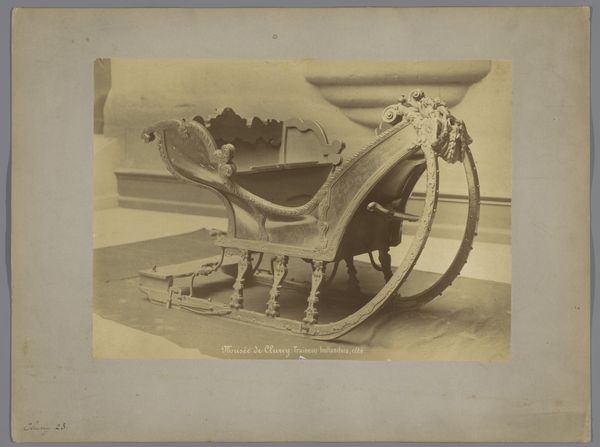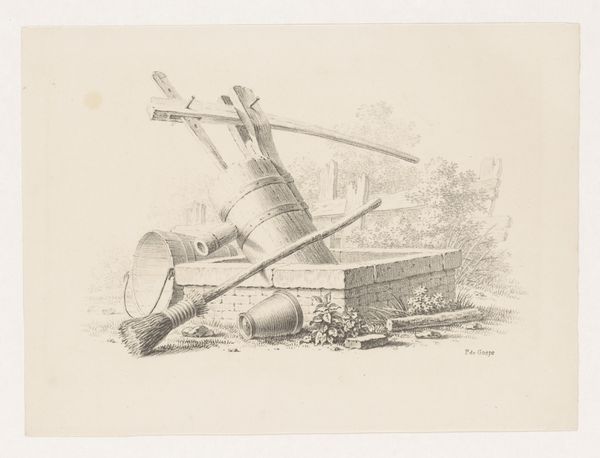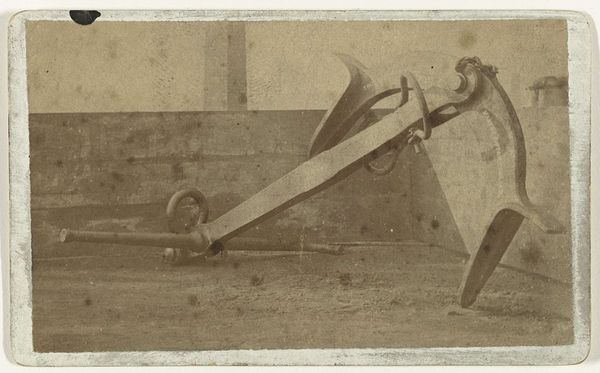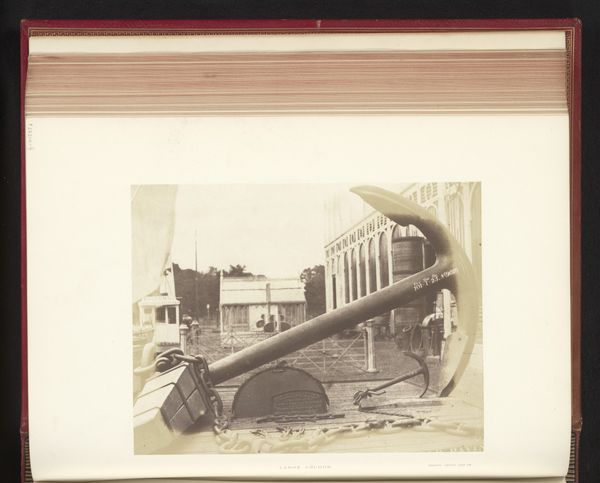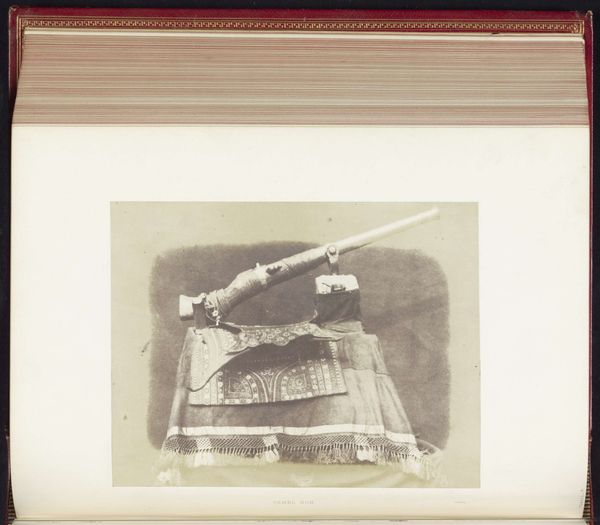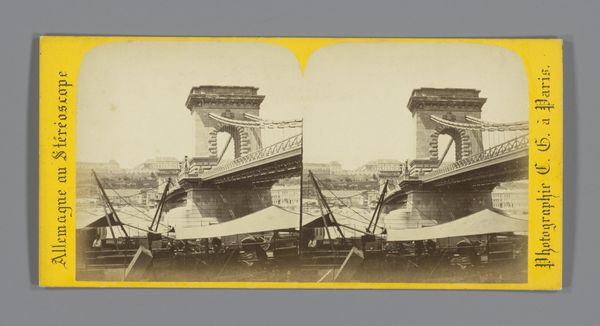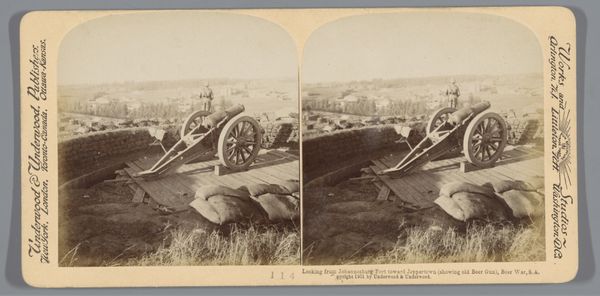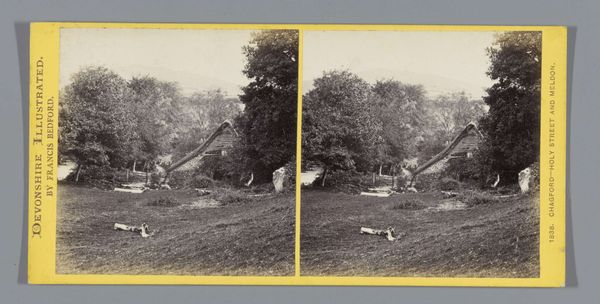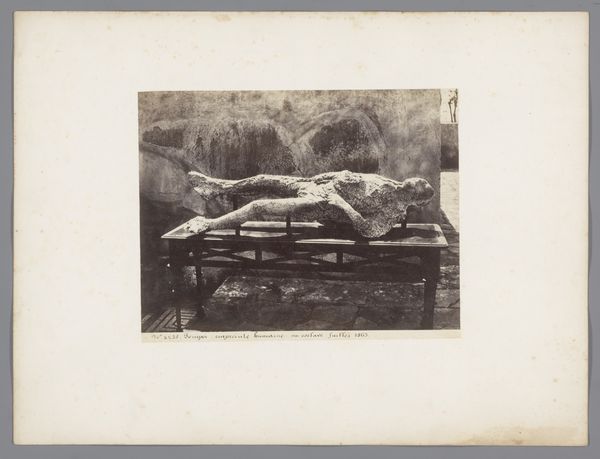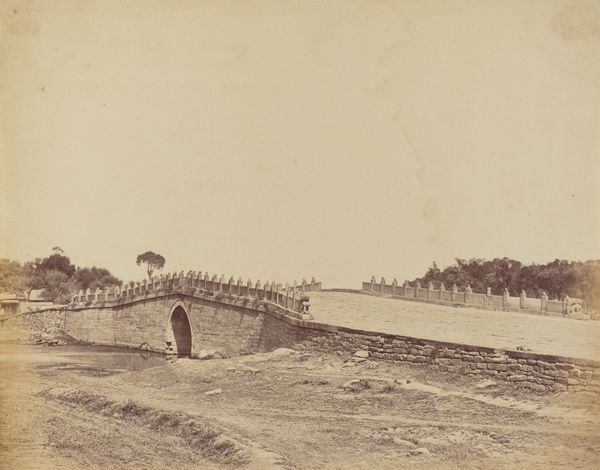
print, photography
#
16_19th-century
# print
#
landscape
#
photography
#
united-states
#
history-painting
#
realism
Dimensions: 17.7 × 23 cm (image/paper); 31.2 × 44.5 cm (album page)
Copyright: Public Domain
Editor: So, here we have "Battery No. 1, Near Yorktown, Virginia," a print made from a photograph by Wood and Gibson, dating back to 1862. It’s a very direct image, quite stark. It shows these enormous cannons, silent but imposing. What strikes you when you look at this piece? Curator: I’m immediately drawn to the cannons themselves, aren't you? They're potent symbols of power, and of course, in the context of 1862, these speak of division. Consider the very nature of a battery – a defensive structure but simultaneously an offensive threat. Think of what the symbolism would evoke for viewers at the time. Editor: I guess I hadn't really considered how loaded that image would be for people then. The cannons aren't just cannons; they represent something much bigger. Curator: Exactly. It’s also interesting to observe the stark realism of the scene. The photograph doesn’t shy away from the grim reality of warfare, but consider the light. It doesn’t heroicize. It’s more matter-of-fact. It invites us to ponder what this technology means for those on either side. Are there any artistic traditions that these cannons call to your mind? Editor: Well, they remind me of some of those classical Roman siege weapons – a visual connection between empires rising and falling, maybe? Is that stretching it too far? Curator: Not at all. The echoing of forms across history. It’s this cultural memory imbedded within images that I find so fascinating. Think too of how they have come to symbolize the past! Editor: It's a lot to consider; this photograph does more than just show us cannons, it tells a story about the way we represent conflict. Curator: And it shows us how objects can evolve into complex symbols of cultural identity, even symbols of trauma. A loaded image, in every sense.
Comments
No comments
Be the first to comment and join the conversation on the ultimate creative platform.
